
The Indriidae are a family of strepsirrhine primates. They are medium- to large-sized lemurs, with only four teeth in the toothcomb instead of the usual six. Indriids, like all lemurs, live exclusively on the island of Madagascar.

A sifaka is a lemur of the genus Propithecus from the family Indriidae within the order Primates. The name of their family is an onomatopoeia of their characteristic "shi-fak" alarm call. Like all lemurs, they are found only on the island of Madagascar. All species of sifakas are threatened, ranging from endangered to critically endangered.

The white woodpecker is a South American species of woodpecker native to the wooded grasslands of Suriname, French Guiana, Brazil, Bolivia, Paraguay, Uruguay and Argentina. It is a bright white bird with black wings and a distinctive small bright yellow eye patch. The IUCN has rated it as a "least-concern species".

Bungarus candidus, commonly known as the Malayan krait or blue krait, is a highly venomous species of snake. The blue krait is a member of the genus Bungarus and the family Elapidae.
Phryganoporus is a genus of Australian intertidal spiders that was first described by Eugène Simon in 1908. Its five species only occur in Australia and Tasmania, with one species also occurring on Norfolk Island, south of New Caledonia. The name is derived from Greek phryganon and poros ("hole"), referring to the web that is often built on dry shrubs or low vegetation with a hole as an entrance.
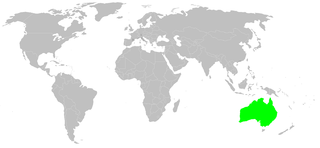
Phryganoporus candidus, also known as the foliage web spider, is a small, subsocial jumping spider endemic to Australia. On average, they are 6–10 mm long and are a mottled brown colour, covered in silvery grey hair. They typically reside in arid and semi-arid locations, building their nests in various trees, bushes, and other plant-life. They have a mutualistic relationship with Acacia ligulata, and therefore prefer to build their nests in these trees.

Candidus was a commander of the Theban Legion. The Theban Legion was composed of Christians from Upper Egypt. He is venerated as a Christian saint and martyr.
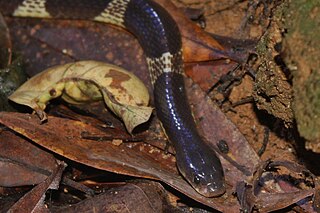
The many-banded krait, also known as the Taiwanese krait or the Chinese krait, is a highly venomous species of elapid snake found in much of central and southern China and Southeast Asia. The species was first described by the scientist Edward Blyth in 1861. Averaging 1 to 1.5 m in length, it is a black or bluish-black snake with many white bands across its body. The many-banded krait mostly inhabits marshy areas throughout its geographical distribution, though it does occur in other habitat types.

The silky sifaka is a large lemur characterized by long, silky, white fur. It has a very restricted range in northeastern Madagascar, where it is known locally as the simpona. It is one of the rarest mammals on Earth. The silky sifaka is one of nine sifaka species, and one of four former subspecies of diademed sifaka (P. diadema). Studies in 2004 and 2007 compared external proportions, genetics, and craniodental anatomy supporting full species status, which has generally been accepted.
The Silverside shiner is a species of cyprinid fish. It is endemic to the southern United States and occurs in the Mobile Basin in Alabama and Mississippi. It occurs in sand-gravel runs of medium to large rivers. It lives in small schools, escaping to deeper water when disturbed. It grows to 11 cm (4.3 in) total length, although is commonly only half of that size.
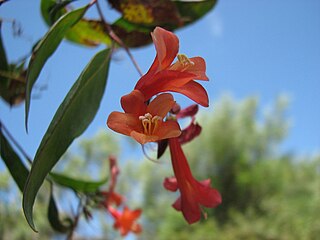
Marianthus is a genus of flowering plants in the family Pittosporaceae and is endemic to Australia. Plants in the genus Marianthus are shrubs with twining branches, simple leaves arranged alternately along the stems. The flowers are pendent, arranged singly or in small groups in upper leaf axils or on the ends of branches with small bracts and bracteoles at the base, but that fall as the flowers open. The sepals are free from each other, and the petals are also sometimes free from each, otherwise joined at the base, forming a tube with spreading lobes. Plants in this genus were previously included in Billardiera, but have a stalked ovary and a long, usually curved style. The fruit is a dehiscent capsule containing many seeds.
Abacetus candidus is a species of ground beetle in the subfamily Pterostichinae. It was described by Andrewes in 1942.
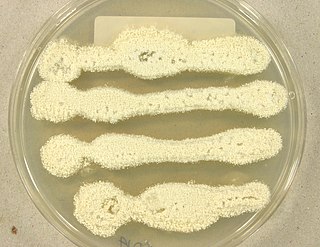
Aspergillus candidus is a white-spored species of fungus in the genus Aspergillus. Despite its lack of pigmentation, it is closely related to the most darkly-pigmented aspergilli in the Aspergillus niger group. It is a common soil fungus worldwide and is known as a contaminant of a wide array of materials from the indoor environment to foods and products. It is an uncommon agent of onychomycosis and aspergillosis. The species epithet candidus (L.) refers to the white pigmentation of colonies of this fungus. It is from the Candidi section. The fungi in the Candidi section are known for their white spores. It has been isolated from wheat flour, djambee, and wheat grain.

Anthicinae is a subfamily of ant-like flower beetles in the family Anthicidae.
Mecynotarsus is a genus of monoceros beetles in the family Anthicidae. There are about 19 described species in Mecynotarsus.

Armadilloniscus is a genus of woodlice in the family Detonidae. There are more than 30 described species in Armadilloniscus.

Chimarra is a genus of little black caddisflies in the family Philopotamidae. There are more than 630 described species in Chimarra.
Squamanotoxus elegans is a species of monoceros beetle in the family Anthicidae. It is found in North America.
Sternechus is a genus of true weevils in the beetle family Curculionidae. There are more than 50 described species in Sternechus.
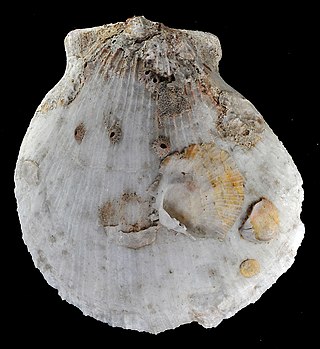
Spondylus candidus is a species of bivalve mollusc within the family Spondylidae. Its distribution covers areas near coasts of Australia and South Africa, and in the Red Sea where it lives in benthic environments at depths of 21 to 75 meters. Fossil occurrences have been found in the Quaternary of Djibouti and in the Miocene of Japan and Vanuatu.













